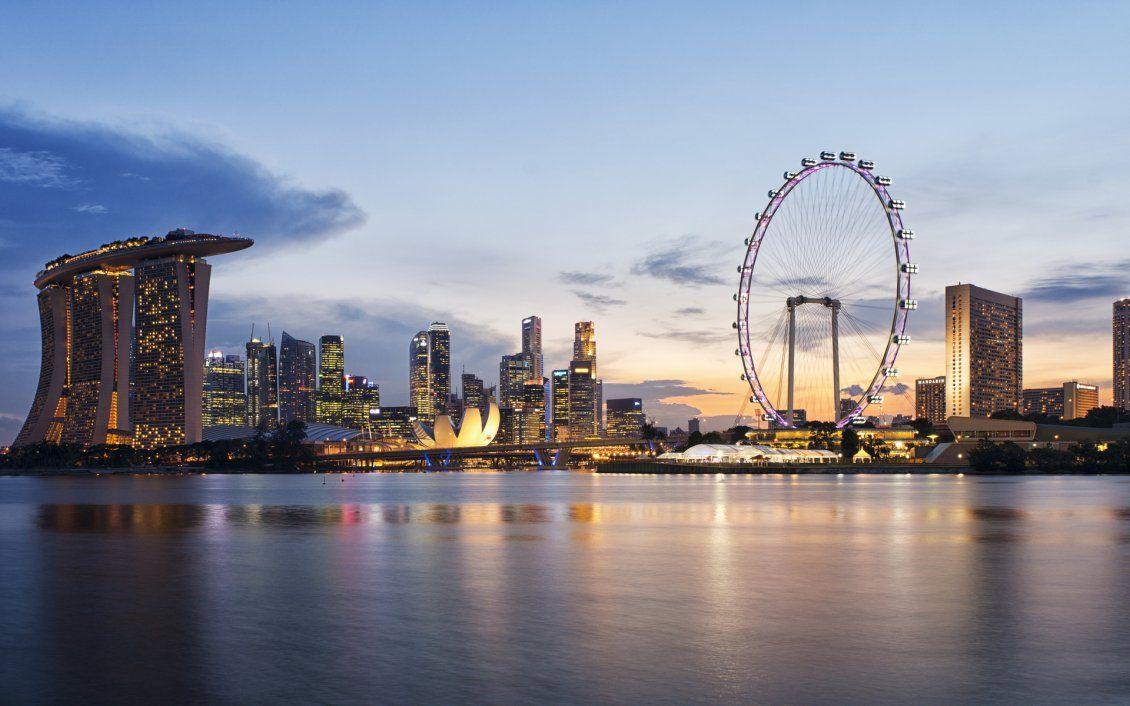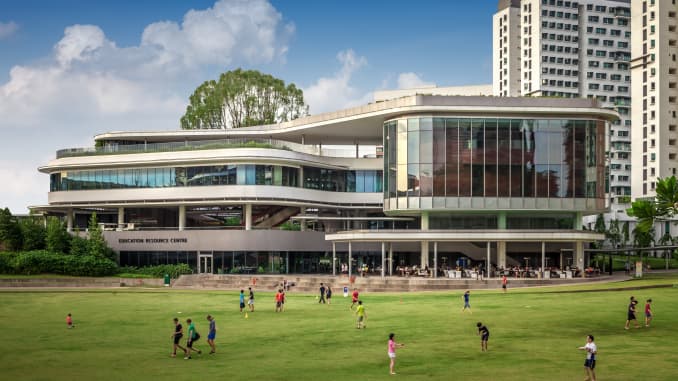As sustainability advocates continue to develop solutions to transform cities into modern, efficient places; so too does the need evolve to make communities capable of addressing environmental and socioeconomic concerns. But humanity is never short of innovations to improve quality of life on the planet. Over the beginning of the 21st-century, a wealth of sustainability options have emerged that perfectly address this need. In this post, we'll list innovative solutions that can transform resource-intensive cities into more sustainable ones.
The Growing Urgency to Make Cities Sustainable
Before we dig into the details of the solutions, it makes sense to know why sustainability is an important goal. As per the World Economic Forum, working to make cities sustainable can significantly improve quality of life. For one, using eco-friendly materials, such as natural organic mattresses and energy-efficient appliances, is cost-efficient. These modern, sustainable goods are also easy to dispose of. Ultimately, applying sustainability principles in home living, urban design, and the economy at large, can reduce the community's carbon footprint. This helps preserve the Earth's natural resources. Most importantly, this can contribute to better public and planetary health, as the environment becomes cleaner.
Here is a snippet from The World Bank, on the growing importance of creating sustainable cities -
Today, over four billion people around the world – more than 50% of the global population – live in cities. In East Asia and the Pacific alone, for example, cities house 1.2 billion people – almost rivaling the population of India.
And that number is still fast growing, most rapidly in Asia and Africa, as individuals and families continue migrating to urban areas to seek better livelihoods. By 2050, with the urban population doubling its current size, nearly 70 out 100 people in the world will live in cities.
However, the speed and scale of urbanization brings tremendous challenges. Widening income gaps, worsening pollution, and aging buildings and bridges are all telltale signs that today’s cities are struggling to keep up with city dwellers’ growing dreams for a sustainable, prosperous future. FROM - The World Bank

Sustainable Solutions for Cities
Yes, it may take a long time to fully transition cities from being resource-intensive to being sustainable. But it will eventually pay off. Experts say the following solutions are proven; as they are successfully used in many cities already. Whether it's using more renewable energy, EVs, energy efficient appliances, or tapping into the circular economy with reuse-recycle practices; communities and cities are creating a worldwide sustainability revolution. Here is a list of several sustainable solutions for city dwellers, and decision makers with influence over urban development, in no particular order -
- The use of electric vehicles (EVs) – EVs are more efficient, cheaper to maintain and run, and are better for the environment. Plus, unlike conventional diesel/ petrol vehicles, EVs don't have polluting exhaust emissions. EVs are eco-friendly; especially when charged by a charging station powered with a municipal grid relying on renewable energy sources. Not only is expanded development of EV charging stations prudent; but increased use of clean and renewable energy for city grids is also needed, to ensure EVs are being charged using sustainable energy.
- Urban and vertical gardens - Many cities are planting more trees in local parks; in addition to the latest trend of green buildings featuring abundant plant life sprouting up all over cities worldwide. For the home, try investing in durable hanging plant shelves where spices, herbs, veggies, and fruits can be grown.
- Usage of energy-efficient appliances – These types of appliances are configured to consume less power without compromising function. These may also come with automatic controls for turning on or off. Learn more about energy star. In addition to the latest energy efficient appliances, it is beneficial to have smart appliances; such as smart thermostats, that are wi-fi enabled and linked to a home energy management system.
- Make renewable energy sources priorities – solar, wind, and hydro energy are renewable sources to efficiently provide electricity to homes, commercial buildings, transportation, and even entire cities. In the US alone, solar energy alone powers up around 12.3 million homes (as of 2018). Meanwhile, over a quarter of homes/ commercial buildings in Australia have solar photovoltaic panels on their properties or rooftops. As a uniquely inspired addition to the world of renewable energy possibilities; Eco Gym in Rochester, New York, has been using workout equipment that produces utility-grade electricity from human energy.
- Development of more bicycle lanes and bike parking areas – Frequent use of diesel or petrol-powered cars increases greenhouse gas emissions. And this could be significantly reduced if more people opt to bike to work or school in cities. This goal can be achieved by encouraging bicycle use with investment in more urban bicycle-friendly infrastructure.
- Shop for food at your local farmers market – Supporting local farmers is a way to preserve and nurture the community's sustainability efforts. Buying local produce (from a farmers market if available in your area, and with your reusable shopping tote bags, of course) is often the eco-friendly way to go; as many local farms today are using organic practices to grow their produce, which is much better for the planet. In addition, consider purchasing products with Fair Trade Certified, Forest Stewardship Council product labels, or other similarly sustainable product labels - as listed here in this article from Treehuger.
- Use sustainably-sourced and eco-friendly household products – Eco-friendly household products (e.g. reusable food bags, natural organic mattresses, green household cleaning supplies, and vegan shampoo) are not made with synthetic chemicals and only take a short time to decompose. Hence, they won't take a toll on the environment.
- Zero net energy (ZNE) buildings – This type of building relies on renewable energy sources, and generates enough power to support its own electricity requirements. Zero net energy buildings are designed to minimize the use of non-renewable energy sources and lower the building’s carbon footprint. Many LEED buildings are also zero net energy buildings; LEED stands for leadership in energy and environmental design. LEED standards, ZNE building standards, or other international energy efficient standards for buildings, such as the International Energy Conservation Code, are a must for all new construction;. Retrofitting existing buildings to the latest energy efficient technologies needs to be a priority in cities worldwide that can afford this investment. Great examples of ZNE and LEED buildings are The Cottle Home in California, the Bullitt Center in Seattle, and many modern energy efficient buildings throughout Europe; especially those in Vauban, Germany and Vaxjo, Sweden.

- Minimize meat consumption – Producing meat products is resource-intensive. It requires billions of gallons of water, tons of fertilizer, other resources; and massive deforestation to clear and maintain land for cows to graze. Extensive use of fertilizers, and cows themselves, produce high methane emissions. Also, some cow waste ends up in the environment; contaminating waterways.
- Start recycling projects – Many people have also started following the zero-waste lifestyle by turning old items into decorative pieces. For instance, it's possible to turn a natural organic mattress into planters, gates, and racks. Fabric and plastic could be turned into artificial flowers.Try and be sure to reduce-reuse-recycle (the 3 Rs) as often as feasible. See here for a guide to recycling; however each municipality, and often different communities within a locality, recycles differently. Do your own research to see how your neighbors recycle, and then try and discover even more ways to practice the 3 Rs.
- Manage food waste – Saving leftovers, composting, and refusing to buy foods in plastic or non-biodegradable containers, are awesome ways to minimize food waste. Learning to preserve fruits and veggies could also help extend their shelf-life. Food waste from groceries and restaurants can also be donated to food banks, as is mandated throughout France. In France, food waste is also used to create energy, as is also the case in the city of Copenhagen. Food leftovers can also be easily donated to food banks Farms can use agricultural waste to generate energy. Agricultural and forest waste; other organic waste streams (such as sewage), can be used by farms and municipalities to create energy in anaerobic digesters. Additionally, food, agricultural, and forestry waste, can be used for conversion into cellulosic biofuel.
- Minimize the use of plastic – Since its invention around 70 years ago, almost all plastic materials ever made still exist today, albeit in different forms through recycling. Some plastic items ended up at the seabed. And, it will take 20 to 500 years for plastic to decompose.
- CO2 capture (carbon capture and sequestration) and waste heat recycling – Heat from industrial plants, combustion gases, and hot equipment surfaces could be collected, re-processed, and re-used to power up buildings or homes; for example, in the case of cogeneration.
- Ridesharing and commuting via public transit - These transportation options help minimize the use of fossil fuels, which is the primary fuel of most cars today. Sharing a ride or taking the public bus, tram, or light rail, reduces greenhouse gas emissions, pollution, and traffic.
- Intelligent streetlights – This product comes with wireless communication sensors. Motion-activated sensors allow the light to shine only if there's activity on the road, be it a bicycle, pedestrian, or vehicle. Some intelligent streetlights are also solar-powered, which is energy-efficient.
As advocacies and news about climate change circulate with urgency, governments and authorities have also made significant leaps toward addressing these issues. One or more of these initiatives have been carried out in many major cities around the world. Overall, strategies and technologies for sustainability might take a long time to fully implement, but the outcome is worth the wait. It's all just a matter of discipline, consistency, and collaboration between the authorities and the community.